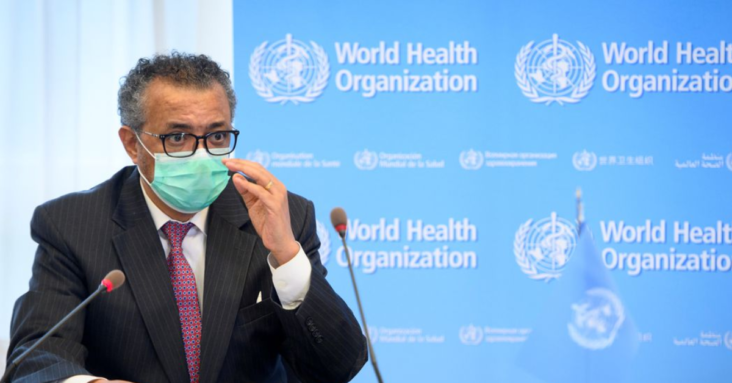
Good morning and thanks for reading. The Health 202 will be off Thursday and Friday for Thanksgiving, so enjoy your holiday weekend and have a slice of pie on us. We’ll be back in your inbox Monday.
Today’s edition: Condom use is down as sexually transmitted infections are on the rise, and students’ academic progress was deeply impacted by the coronavirus pandemic. But first …

For the first time, a majority of Americans dying from the coronavirus received at least the primary series of the vaccine.
Fifty-eight percent of coronavirus deaths in August were people who were vaccinated or boosted, according to an analysis conducted for The Health 202 by Cynthia Cox, vice president at the Kaiser Family Foundation.
It’s a continuation of a troubling trend that has emerged over the past year. As vaccination rates have increased and new variants appeared, the share of deaths of people who were vaccinated has been steadily rising. In September 2021, vaccinated people made up just 23 percent of coronavirus fatalities. In January and February this year, it was up to 42 percent, per our colleagues Fenit Nirappil and Dan Keating.
“We can no longer say this is a pandemic of the unvaccinated,” Cox told The Health 202.
Being unvaccinated is still a major risk factor for dying from covid-19. But efficacy wanes over time, and an analysis out last week from the Centers for Disease Control and Prevention highlights the need to get regular booster shots to keep one’s risk of death from the coronavirus low, especially for the elderly.
Anthony Fauci, the nation’s preeminent infectious-disease expert, used his last White House briefing yesterday ahead of his December retirement to urge Americans to get the recently authorized omicron-specific boosters.
“The final message I give you from this podium is that please, for your own safety, for that of your family, get your updated covid-19 shot as soon as you’re eligible,” he said.
White House press secretary Karine Jean-Pierre:
Cox, like many experts, says she’s not surprised by the ratio shift. There are a few reasons:
Around 35 million people have received the updated boosters that became available to people 12 and over in September and to children as young as 5 last month. That’s a little over 10 percent of the U.S. population, amid concern that cooler weather will bring a surge of covid cases as people move indoors and respiratory infections spread.
Yesterday, the White House announced a six-week push ahead of the holidays aimed at increasing booster uptake among seniors, people who are racial minorities and those who live in rural areas, all of which have disproportionately suffered severe disease and death during the coronavirus pandemic, our colleagues Frances Stead Sellers and Ariana Eunjung Cha write.
Senior officials said the Biden administration would direct some of its remaining resources to fight the pandemic into a $475 million campaign to support community health centers and organizations working to get the elderly and people with disabilities boosted.
The administration’s push coincided with the release of a CDC study offering the first evidence that the bivalent boosters are better at preventing symptomatic infection against newly circulating variants than earlier doses.
“I feel very confident that if people continue to get vaccinated at good numbers, if people get boosted, we can absolutely have a very safe and healthy holiday season,” Ashish Jha, White House coronavirus czar, said yesterday.
Rep. Hank Johnson (D-Ga.)

Public health authorities are confronting a national rise in sexually transmitted infections (STI) amid a steady decline in use of what was once a staple in curbing the spread of disease: condoms, our colleague Fenit Nirappil reports.
Why it matters: The United States recorded nearly 2.5 million cases of chlamydia, gonorrhea and syphilis in 2021, more than doubling the total from two decades ago, according to preliminary data from the CDC.
About half of new infections last year were in people between the ages of 15 and 24. Men who have sex with men contract infections at higher rates than heterosexuals because they are more likely to have multiple recent partners and it’s easier for sexually transmitted diseases (STD) to circulate in smaller networks of people, Fenit explains.
At the same time, condoms, once central to campaigns to eradicate STDs at the height of the AIDS crisis, have fallen out of fashion.
- Federal family planning surveys show condoms went from the top contraceptive tool for 75 percent of men in 2011 to 42 percent in 2021.
- The percentage of high-schoolers who said they used a condom the last time they had sex also declined, dropping from 63 percent in 2003 to 54 percent in 2019, according to an annual government survey.
That’s partly because of the advent of long-acting contraception and medications that drastically reduce HIV transmission, enabling people to have condomless sex while still leaving them vulnerable to other diseases that spread through fluids and skin-to-skin contact. Scientists and health officials say they’re now focused on vaccine development, affordable at-home testing and medication taken after sex as the next generation of weapons in the battle against STDs.

Teva Pharmaceutical Industries and AbbVie Inc. will pay more than $6.6 billion to states and local governments to settle thousands of lawsuits over the marketing of opioids, Reuters reports.
The details: Under the deals, Israel-based Teva will pay up to $4.25 billion, some of which will be paid as a supply of the overdose reversal drug naloxone. AbbVie’s Allergan unit will pay up to $2.37 billion. The final amounts of the settlements will depend on how many plaintiffs opt into them.
Both companies have been accused of misleading marketing practices that fueled opioid addiction in states across the country. The settlements are not an admission of wrongdoing in the epidemic that, according to federal data, killed more than 100,000 Americans last year alone.
Iowa Attorney General Tom Miller (D):

Academic progress for American children plunged during the coronavirus pandemic. But learning loss varied greatly, and a new body of research highlights that some students were harmed more than others, The Post’s Laura Meckler reports.
Here’s a snapshot of the top takeaways from more than a half-dozen studies published in recent months analyzing the pandemic’s toll on academic achievement:
- Students who learned from home longer fared worse than those who quickly returned to the classroom, offering substantial evidence for one side of a hot political debate.
- High-poverty schools, which were more likely to go remote in the first place, saw the biggest decrease in reading and math scores compared with those filled with middle class and affluent kids.
- Older students, who have the least amount of time to make up losses, are recovering much more slowly from setbacks than younger children, Laura writes.
Students have made some progress since returning to the classroom, but it hasn’t been anywhere near enough to make up for the losses already sustained. “People were hoping, ‘Oh gosh, there’s going to be a lot of natural bounce back that occurs,’ and we did not see it last year,” said Tom Kane, faculty director for the Center for Education Policy Research at Harvard University. “Maybe it will happen this year, but I’m not sure there’s much evidence underlying that hope.”
Karyn Lewis, director of the Center for School and Student Progress at the testing company NWEA:
- The World Health Organization is expected to announce as early as today that it is planning to rename monkeypox, designating it as “MPOX” in an effort to destigmatize the virus that fueled a record outbreak across the United States earlier this year, Polito reports.
- The Food and Drug Administration approved Hemgenix yesterday, the first gene therapy for the treatment of adults with a rare form of the bleeding disorder hemophilia that will come with a $3.5 million price tag, the Associated Press reports.
- Students and staff in D.C. public schools will be required to produce a negative coronavirus test before returning to the classroom after Thanksgiving break, our colleague Lauren Lumpkin reports.



